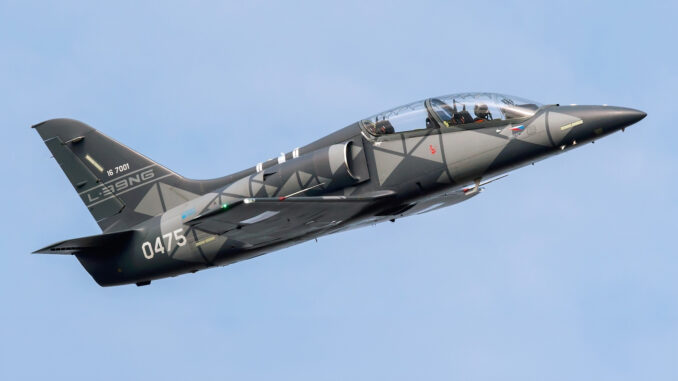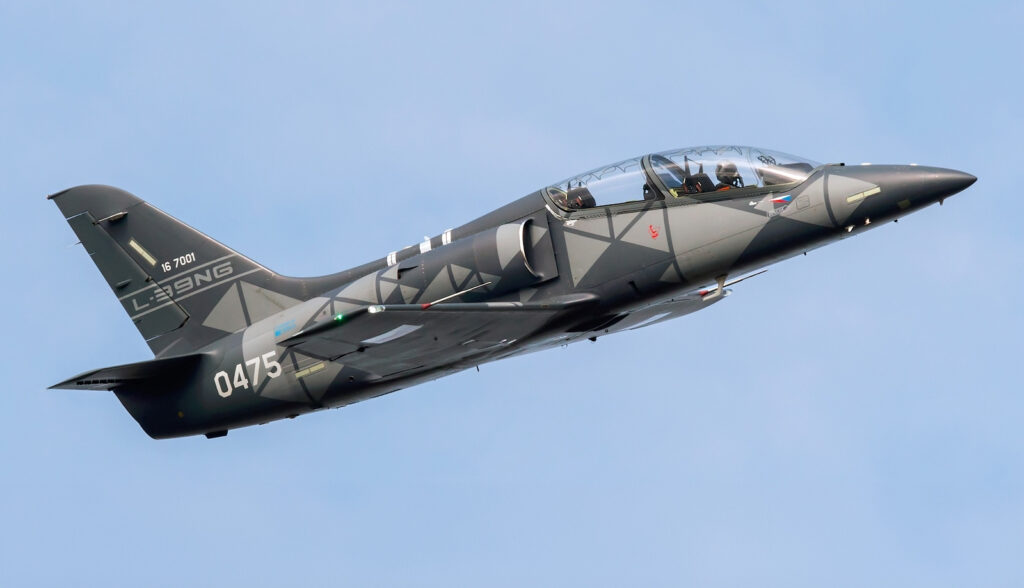
Vietnam receives its first L-39NG aircraft to replace the L-39C Albatros, modernising its military pilot training programme.
Vietnam recently received its first delivery of six L-39NG trainer aircraft from Aero Vodochody, marking a key step in the modernisation of its air force. These aircraft, equipped with modern turbofan engines and new avionics, will replace the old L-39C Albatros and complement the Russian Yak-130s. This initiative aims to improve pilot training capabilities while meeting the tactical needs of the Vietnamese Air Force.
Delivery of the L-39NG: a necessary modernisation
Vietnam has taken a significant step towards modernising its military aviation with the delivery of the first examples of the L-39NG, a new-generation trainer developed by Aero Vodochody. This model is an evolution of the emblematic L-39 Albatros, widely used during the Cold War. In February 2021, Vietnam placed an order for 12 L-39NGs, and the delivery of this first series of six aircraft marks the start of their integration into the Vietnamese armed forces.
The L-39NGs are designed to replace the L-39C Albatros, which until now have been the backbone of military pilot training in Vietnam. These new aircraft are not only more modern, but also better adapted to the army’s current needs, thanks in particular to the introduction of Williams FJ44 turbofan engines, manufactured in the United States, and advanced avionics that improve the safety and efficiency of training missions.
The transition to these new aircraft is part of a wider strategy to modernise the Vietnamese armed forces. Replacing the L-39C with the L-39NG represents a significant investment, reflecting the country’s desire to improve the quality of pilot training while meeting the requirements of modern warfare. The cost of this programme is estimated at several hundred million euros, taking into account not only the price of the aircraft, but also the training systems and support infrastructure required for their deployment.
Technical characteristics of the L-39NG: a significant improvement
The L-39NG is an upgraded version of the L-39 Albatros, incorporating several modifications that make it a much more powerful aircraft. One of the main innovations is the adoption of the Williams FJ44 engine, a turbofan that is more powerful and more fuel-efficient than the original engine. This engine enables the L-39NG to reach a maximum speed of 775 km/h and a range of 1,300 km, while reducing operating and maintenance costs.
The changes made to the avionics are just as significant. The cockpit of the L-39NG is equipped with modern digital systems, including multifunction displays and an avionics suite that meets Western standards. These improvements provide a better man-machine interface, making it easier to train pilots on systems similar to those they will encounter in more advanced combat aircraft.
In addition, the L-39NG has been designed to be modular, allowing configurations to be adapted to the specific needs of each user. For example, Vietnam has opted for a configuration that supports pilot training on Russian fighter aircraft, such as the Sukhoi Su-30MK2, which form the backbone of their air force. This flexibility is a major asset, enabling the aircraft to meet a wide range of requirements in a complex geopolitical context.

Consequences for pilot training in Vietnam
Vietnam’s acceptance of the L-39NG marks a turning point in the training of the country’s military pilots. Traditionally, Vietnamese pilot training has been based on Russian-made aircraft, such as the Yak-52 and Yak-130, in addition to the L-39C Albatros. The introduction of the L-39NG adds an extra dimension to this training programme, providing a more modern and efficient platform for the intermediate and advanced training phases.
One of the main consequences of this modernisation is the improved skills of Vietnamese pilots. The L-39NGs, with their advanced avionics and superior performance, enable pilots to familiarise themselves with technologies and systems that they will encounter on more recent generation fighters. This reduces the technological gap between training and actual operations, thereby increasing the operational effectiveness of air forces.
In addition, the integration of the L-39NGs into the Vietnamese training programme could also have a significant impact on long-term costs. Although the acquisition of these aircraft represents a high initial investment, the potential savings in terms of maintenance costs and fuel consumption, coupled with more effective training, could offset these expenses. In addition, the modularity of the L-39NG could enable Vietnam to reduce the number of aircraft needed for different types of mission, thereby optimising resources.
Development prospects and geopolitical implications
Vietnam’s acquisition of the L-39NG is part of a geopolitical context in which the modernisation of its armed forces is essential to maintain a strategic balance in the Asia-Pacific region. Vietnam, with its long coastline and disputed borders in the South China Sea, must have air forces capable of responding to a variety of threats, whether on land or at sea.
The modernisation of Vietnam’s military aviation, notably with the introduction of the L-39NG, is therefore a direct response to these strategic needs. By adopting these modern training aircraft, Vietnam is not only improving its training capabilities, but also its ability to project its air power in a region of growing tension. It also sends a strong signal to other countries in the region that Vietnam is determined to modernise its armed forces to defend its sovereign interests.
From a technological point of view, Vietnam benefits from cooperation with European and American companies, giving it access to cutting-edge technologies while diversifying its sources of supply. This diversification is crucial to reducing dependence on Russia, which has historically been Vietnam’s main arms supplier. By integrating Western systems, Vietnam is improving the interoperability of its armed forces with those of other nations, thereby strengthening its position on the international stage.
A key step for the future of the Vietnamese Air Force
Vietnam’s receipt of the L-39NGs represents much more than a simple update to its training fleet. It is a central element of a wider strategy to modernise the armed forces, aimed at equipping the country with the resources needed to train competent pilots ready to face the challenges of modern warfare. The economic, technological and geopolitical implications of this acquisition are far-reaching, and will undoubtedly strengthen Vietnam’s position in a rapidly changing region.
The introduction of these advanced training aircraft is a clear example of how Vietnam is seeking to adapt its armed forces to the demands of the 21st century, while ensuring that its pilots have the best tools to protect national sovereignty and interests.
War Wings Daily is an independant magazine.